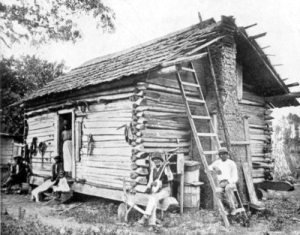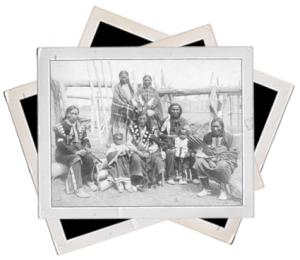The State of Minnesota’s name comes from a Sioux term that can be translated as “cloudy water” and that term referred to the Minnesota River and its cloudiness. Minnesota has over 15,000 lakes, which is why it is known as “Land of 10,000 Lakes.” About 75% of those lakes take up 10 acres or more each. Another nickname for Minnesota is “the Gopher State.” Some people claim that that stems from the fact that southern Minnesota is home to a lot of gophers.
Others insist that the name comes from a 19th century political cartoon that was poking fun at railroad union organizers and depicting them as gophers. The “North Star State” is another nickname for the state and comes from the translation of the state seal, L’Etoile du Norde. St. Paul and Minneapolis, which are the state capital and the largest city in the state, respectively, are known as the Twin Cities and they are the most well-known cities in the state.
In the time since the original exploration of Minnesota, four different nations have claimed the region at various points. Not only that, but nine subdivisions or U.S. territories have governed the area at various points as well. That’s why it is so important to have an understanding of how Minnesota was governed and controlled at various points, when doing ancestral research.
Simon Francois Daumont, Sieur de St. Lusson built and blessed a large cross on June 14, 1671 at Sault de Ste. Marie. That act claimed a region including what is now Minnesota for the King of France. The French soon took over the area, trading and bonding with the Native Americans. They constructed forts, started a fur trading industry and explored the region.
The section of Minnesota that lies west of the Mississippi River belonged to the French until 1762, when they ceded it to Spain. That was how the cities of Minneapolis and St. Paul each became Spanish and French for a short time. The next year, however, the Treaty of Paris was signed and England was given free travel on the Mississippi and free reign over the territory east of it. A proclamation was made that prevented anyone from settling or trading in the northeastern section of Minnesota. Then that area became part of Quebec in 1774 and later part of the United States, in 1784. It wasn’t until 1787, however, that the area became more organized. Then, in 1800, it became part of Indiana Territory. A section of northwest Minnesota was under English control up until 1818, just as a southwestern section of the state was under Spanish control, but only until 1800 when it was ceded to the French. Then, in 1804, it became part of the District of Lousiana and then the Louisiana Territory until 1812.
In 1809, the Indiana Territory section of Minnesota was transferred to become part of Illinois Territory. Then, in 1818, it became part of Michigan Territory. The rest of the state, from 1812 through 1821, was part of Missouri Territory. However, the area wasn’t well-organized until 1834, when Michigan Territory acquired the entirety of Minnesota country. It stayed that way for only two years, however, before becoming part of Wisconsin Territory in 1836.
In 1838, the area was divided and the section of Minnesota west of the Mississippi was categorized as part of Iowa Territory. That lasted for about 8 years, until 1846. The eastern part of the state stayed part of Wisconsin Territory until Wisconsin gained statehood on May 29, 1848. At that point, Minnesota lost all forms of organized government for a while. However, the Stillwater Convention of 1848 did eventually help Minnesota to become an organized territory again. Minnesota became a recognized region in and of itself in March of 1849 and, at that time, parts of North and South Dakota were considered to be part of that region. Then, in May of 1858, Minnesota finally became a state, becoming the 32nd state to join the Union.
There were several things that had an impact on early Minnesota settlers, including Catholic missions, military personnel coming to the area and the fur trading industry. Col. Henry Leavenworth and the Fifth United States Infantry established New Hope, a primitive cantonment, in 1819 near Mendota. It was later renamed Camp Coldwater and it was moved to high ground in 1820. However, it was soon replaced by Fort St. Anthony, a stone fort. In 1825, that was renamed and became Fort Snelling. Early settlements in the area seemed to rapidly expand out from Fort Snelling. Some of the people in the area at the time included Selkirk Colony refugees from Canada and French-Canadian traders. The first land was made available for settlement by 1837 Indian treaties. Once logging sawmills were built on the St. Croix River, settlers began to build colonies there as well. More settlers started to develop the area on the east of the Mississippi at St. Anthony Falls and that later turned into Minneapolis.
The territory west of the Mississippi was opened up for settlement in 1851 by the Treaties of Mendota and Traverse des Sioux. More people came to the area in 1854 when the Rock Island Railroad was established. Even more people immigrated to the area thanks to the Homestead Act of 1862.
The majority of the people who immigrated to Minnesota from 1820 to 1890 were of Scandinavian, German and British descent. However, there were also Belgians, Swiss, Polish and Czech people, as well as immigrants from the Netherlands. The period of time from 1890 to 1920 brought a lot of poor people to the area because they were looking for jobs in Minnesota’s rapidly growing industries. Those people included Ukrainians, Poles, Jews, Russian-Germans, Austro-Hungarians, Russians, Greeks and Italians, as well as Finns.
Minnesota Ethnic Group Research

- Minnesota Native American Books (amazon.com)

In 1837, large amounts of Native American land began to be ceded to the French. That included a large area between the Mississippi River and the St. Croix River. The chiefs then moved to northern areas, where they thought they had only given the French the right to cut timber. Then, in 1849, they realized that the land actually no longer belonged to them at all.
The Winnebago and Menominee tribes were given land in central Minnesota in 1847, but they never actually resided on that land. In 1851, the United States acquired most of southern Minnesota from the Dakota Indians at Traverse des Sioux and Mendota. The Ojibway surrendered a lot of their land in northern Minnesota via treaties signed in 1854, 1855, 1863 and 1866.
The Dakota treaties of the 1850s and 1860s led to a very sad time in the history of Minnesota. Reservations were supposed to be properly established, but they weren’t. Several bands of Native Americans wouldn’t willingly move to the reservations that were established in the 1850s. Many Dakota families tried to flea to their original homes, but found European settlers had taken over. In Jackson County, Minnesota and in Spirit Lake, Iowa, several settlers were killed, in 1857. There was a treaty signed in 1858 that was meant to give the Dakota people self-government and land, but the treaty failed. The 1862 Sioux Conflict was the result. After that, many of them fled to Canada or to Dakota Territory. Others were moved to Crow Creek, in what is now modern-day South Dakota. However, there were many deaths due to the bad conditions at Crow Creek. Eventually, in 1866, the surviving tribe members were relocated to Nebraska.
Although the Ojibway tribe in Minnesota were peaceful and didn’t get into conflicts with settlers, they government tried to force them onto reservations. Some refused to move and the tribe tried to consolidate what was left of its lands via inter-tribal treaty parcel consolidation.
There were almost double the amount of Native Americans in Minnesota in 1980 than there were when the Europeans first settled the area. In fact, Minneapolis and St. Paul together have the third largest Native American urban concentration in the country. One of the only unceded and unallotted reservations left in the USA is located in northern Minnesota and the Ojibway live there.
- Minnesota Native American Books (amazon.com)
Minnesota History Databases and other Helpful Links
The websites below will provide state-specific details to those in search of information for Minnesota genealogy work.
- Minnesota County History Name Index
- Minnesota Newspaper Headline Index
- Minnesota Railroads, 1849-75
- William Folsom, Fifty Years in the Northwest
- Minnesota’s Early Explorers
- Summer rambles in the West
- Summer on the lakes, in 1843
- The Minnesota handbook for 1856-7
- The Standard guide, Mackinac Island and northern lake resorts
- Centennial of the Territory of Minnesota Exhibition, March 5, 1949-June 15, 1949 : an address by the Hon. Hubert H. Humphrey, s
- The keeper of the gate, or, The sleeping giant of Lake Superior
- Guide to historic markers erected by the State Highway Department cooperating with the Minnesota Historical Society
- Documents relating to the French settlements on the Wabash
- Third biennial report of the Minnesota War Records Commission : for the years 1923 and 1924 : including a descriptive catalog o
- Autograph letters
State Genealogy Guides
[mapsvg id=”13028″]
